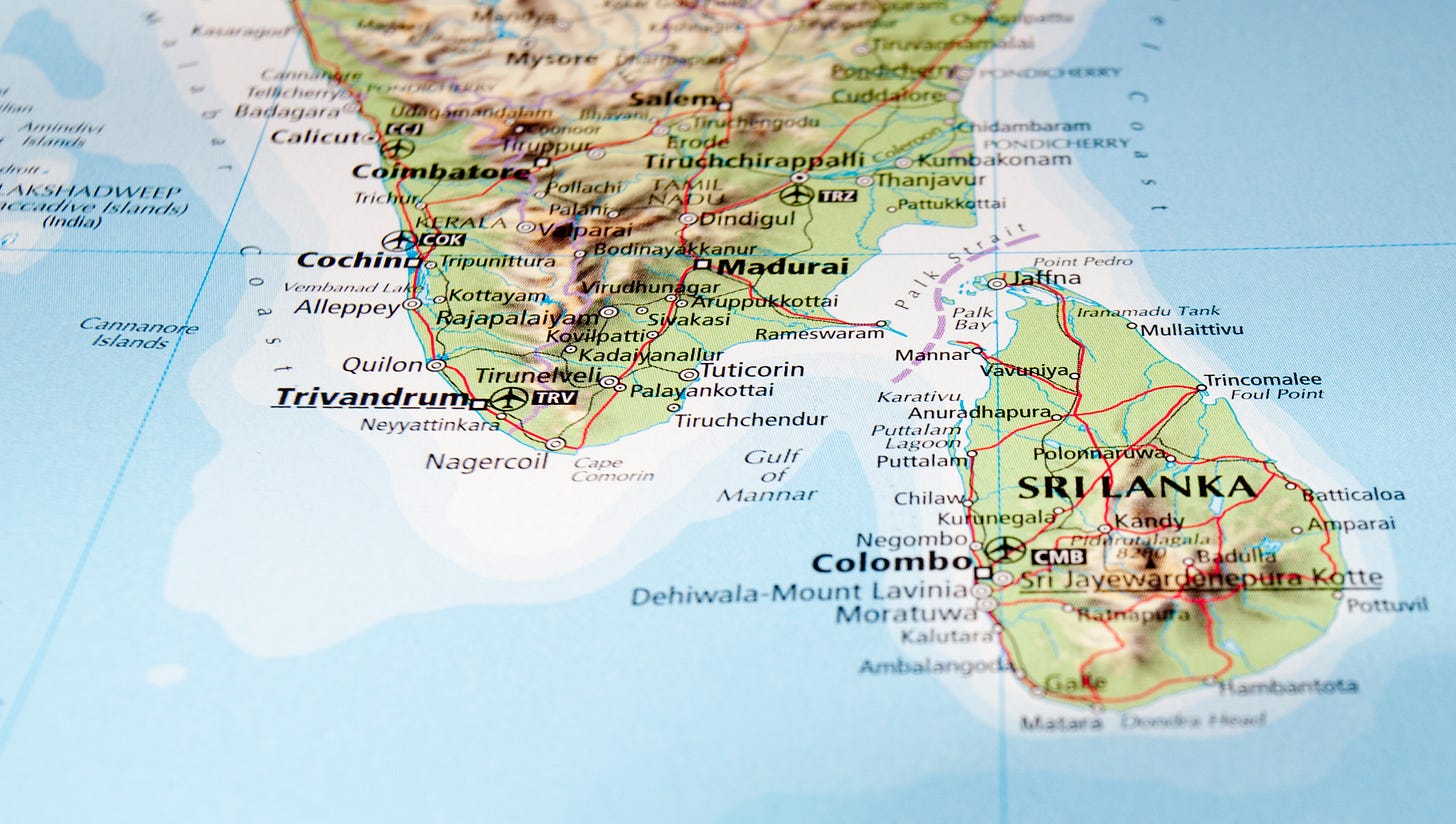Running From Empty
“The single most exciting thing you encounter in government is competence because it's so rare.” – Daniel Patrick Moynihan
Until quite recently, Sri Lanka was a pretty good country. With a GDP-per-capita exceeding $4,000 in 2018, the World Bank classified it as an “Upper Middle-Income” nation. As benchmarks, consider that Ukraine had a GDP-per-capita of roughly $3,000 in the same year, and India about $2,000. As is widely known by now, Sri Lanka has undergone what can only be described as a complete societal collapse – its government in chaos and its desperate citizens rioting in the streets.
Much ink has been spilled over Sri Lanka’s shockingly fast breakdown. For an excellent primer on the issue, we recommend a recent Decouple podcast hosted by our friend Dr. Chris Keefer. On the show, Dr. Keefer interviews Saloni Shah, a food and agriculture analyst at The Breakthrough Institute and author of a fantastic piece published in Foreign Policy titled “In Sri Lanka, Organic Farming Went Catastrophically Wrong.” Here’s how the piece opens (emphasis added throughout):
“Faced with a deepening economic and humanitarian crisis, Sri Lanka called off an ill-conceived national experiment in organic agriculture this winter. Sri Lankan President Gotabaya Rajapaksa promised in his 2019 election campaign to transition the country’s farmers to organic agriculture over a period of 10 years. Last April, Rajapaksa’s government made good on that promise, imposing a nationwide ban on the importation and use of synthetic fertilizers and pesticides and ordering the country’s 2 million farmers to go organic.
The result was brutal and swift. Against claims that organic methods can produce comparable yields to conventional farming, domestic rice production fell 20 percent in just the first six months. Sri Lanka, long self-sufficient in rice production, has been forced to import $450 million worth of rice even as domestic prices for this staple of the national diet surged by around 50 percent. The ban also devastated the nation’s tea crop, its primary export and source of foreign exchange.”
Earlier this week, brilliant author and California gubernatorial candidate Michael Schellenberger posted an article on his Substack called “Green Dogma Behind Fall Of Sri Lanka.” Here’s the key passage:
“But the underlying reason for the fall of Sri Lanka is that its leaders fell under the spell of Western green elites peddling organic agriculture and ‘ESG,’ which refers to investments made following supposedly higher Environmental, Social, and Governance criteria. Sri Lanka has a near-perfect ESG score (98) which is higher than Sweden (96) or the United States (51).”
To some, the fact that Sri Lanka achieved a “near-perfect ESG score” and then collapsed is ironic. To us, it is causal. For all the nuanced specifics involved, including government corruption, insane fertilizer bans, and submission to foreign know-it-all experts, at its core, Sri Lanka collapsed because it flubbed its energy policy. Fertilizer and food are nothing more than derivatives of energy – rather important ones at that – and Sri Lanka stands as powerful evidence that energy is indeed life, and the absence of energy is death. As videos of Sri Lankan citizens ransacking their Presidential Palace went viral on Twitter, we could not help but feel a deep sadness. Absent a massive and urgent intervention by international aid organizations (which does not seem forthcoming), no amount of protesting will win Sri Lanka’s citizens a reprieve. Akin to passengers scrambling through the banquet halls of the Titanic, their fate is sealed. Mass starvation and unthinkable suffering undoubtedly await.
For more than a decade, Germany has been doing its best Rajapaksa impersonation in pursuit of its disastrous Energiewende policy, a plan meant to transition the country to a “low carbon, environmentally sound, reliable, and affordable energy supply.” Despite investing several hundred billion Euros implementing Energiewende, the plan has delivered the opposite of those things. Germany had among the most expensive electricity in the developed world prior to Russia’s invasion of Ukraine, another strong causal relationship that radical environmentalists refuse to acknowledge. Germany has severely damaged its manufacturing base, eroded its geopolitical power, and risked its people’s literal future in pursuit of Energiewende. Surely, Germany is not in jeopardy of replicating Sri Lanka’s collapse, are they? While the country has a deeper buffer between it and the abyss than Sri Lanka did, it is closer than many would like to admit. Let’s dig in.



